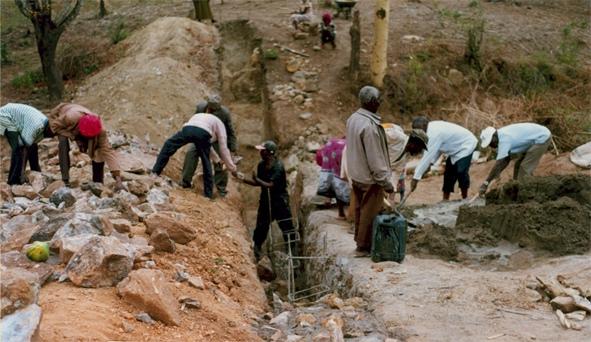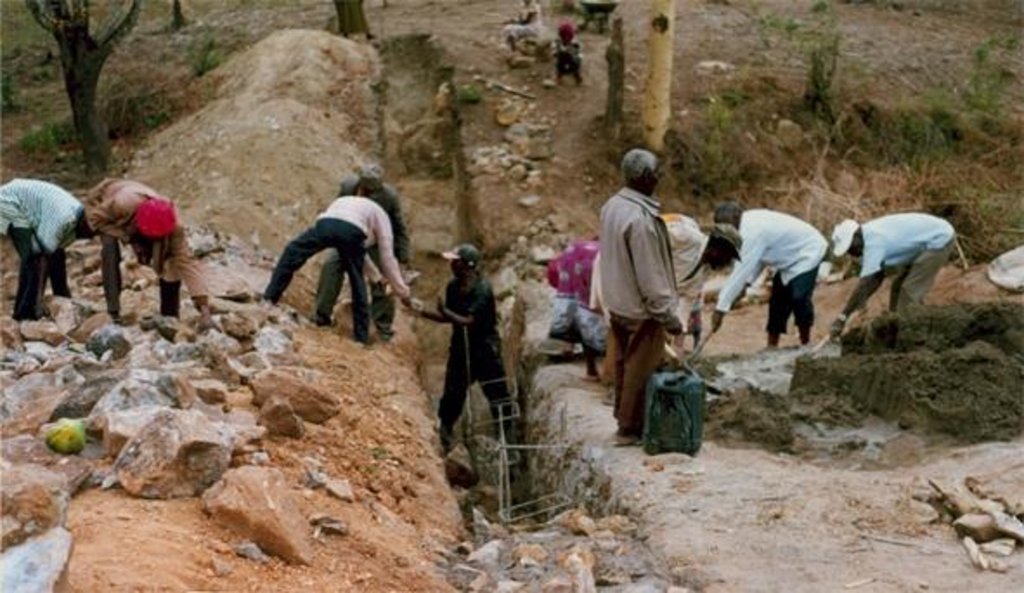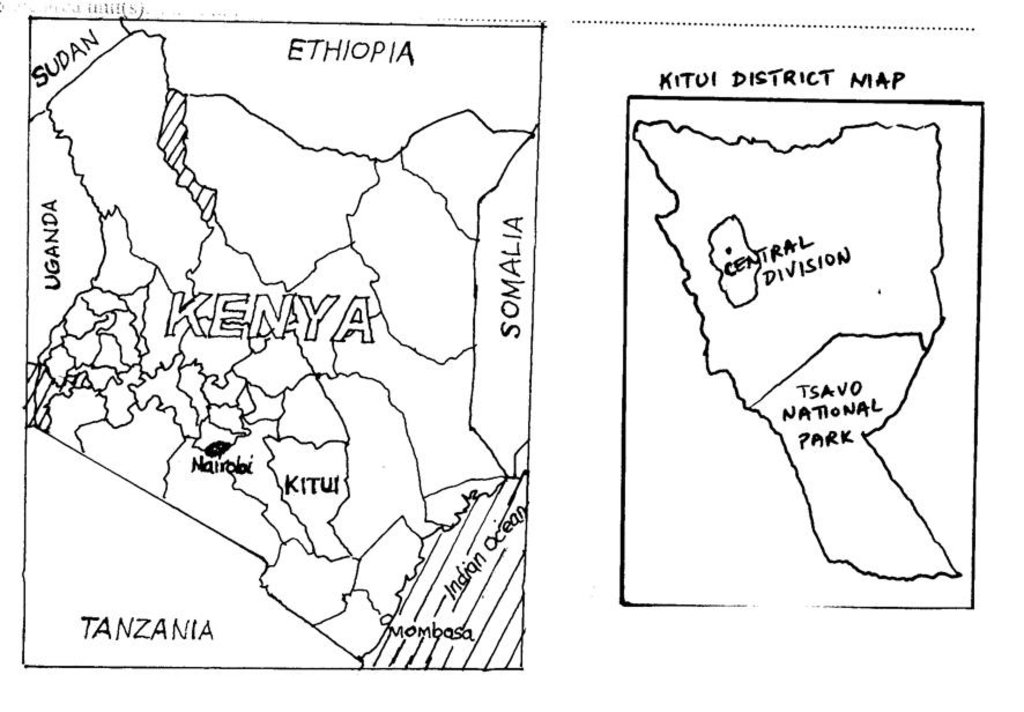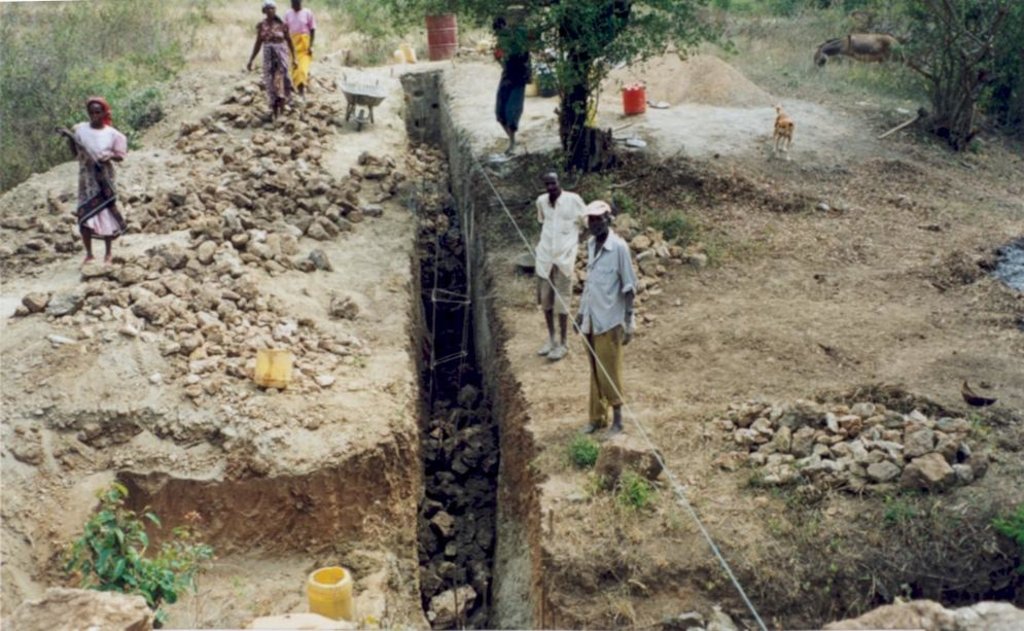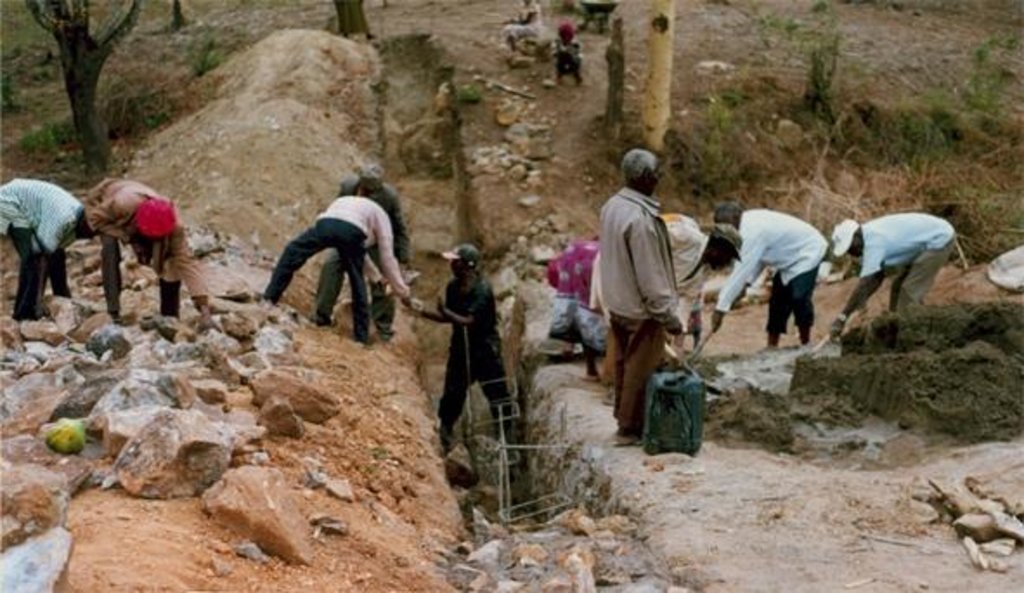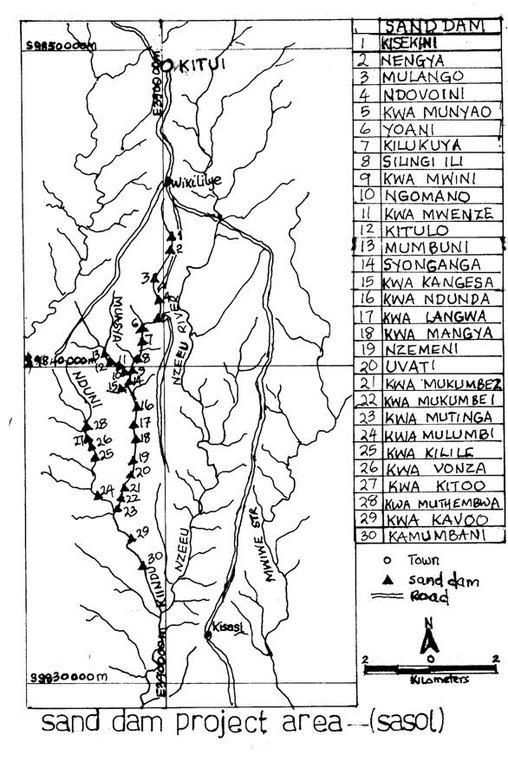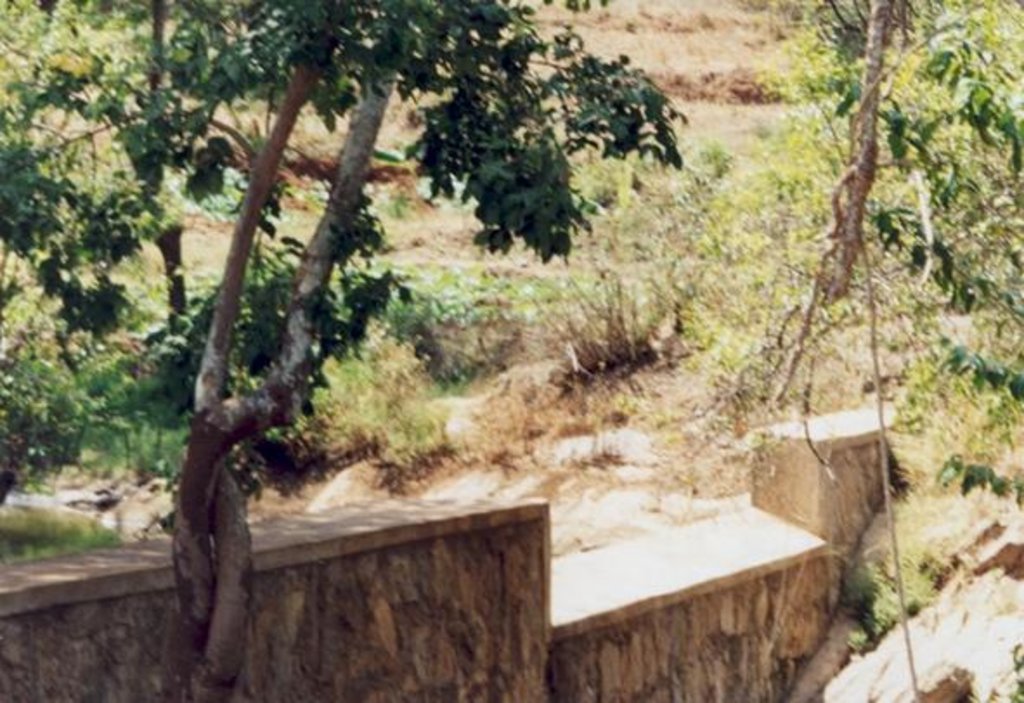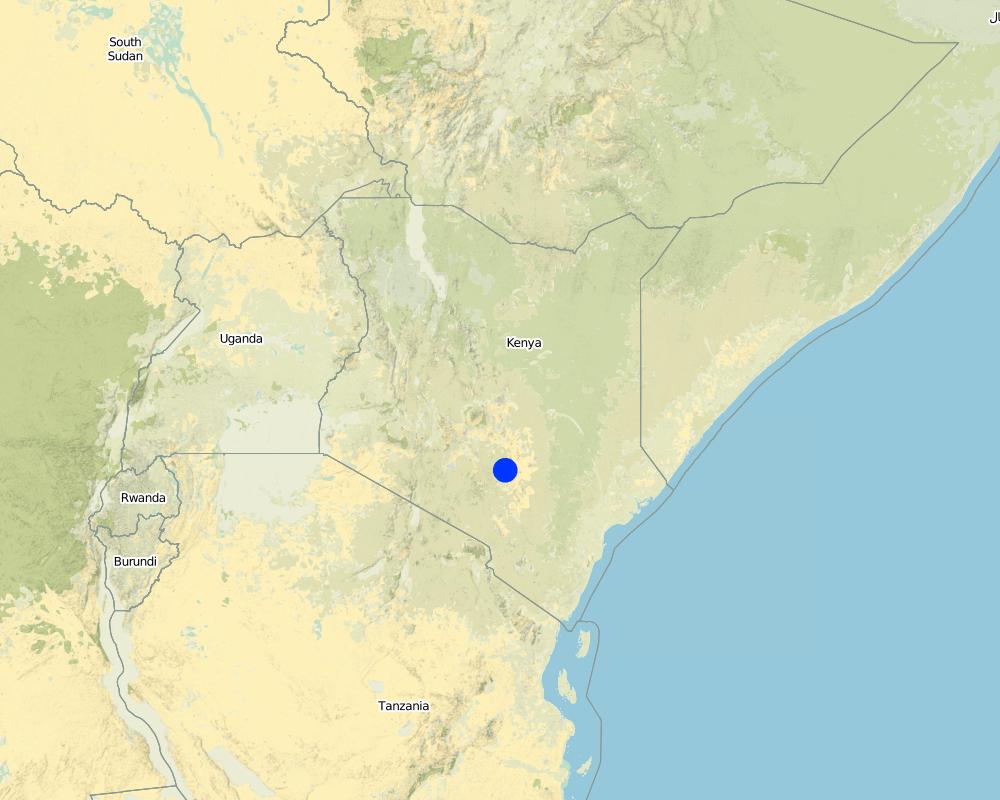SASOL community approach - for sand dams in Kitui [เคนยา]
- ผู้สร้างสรรค์:
- การอัพเดท:
- ผู้รวบรวม: Donald B. Thomas
- ผู้เรียบเรียง: –
- ผู้ตรวจสอบ: Fabian Ottiger
approaches_2358 - เคนยา
ดูส่วนย่อย
ขยายทั้งหมด ย่อทั้งหมด1. ข้อมูลทั่วไป
1.2 รายละเอียดที่ติดต่อได้ของผู้รวบรวมและองค์กรที่เกี่ยวข้องในการประเมินและการจัดเตรียมทำเอกสารของแนวทาง
ผู้เชี่ยวชาญ SLM:
Mutiso Sam
sasol@kenyaweb.com
SASOL Foundation
PO Box 85 Kitui Kenya
เคนยา
ชื่อของโครงการซึ่งอำนวยความสะดวกในการทำเอกสารหรือการประเมินแนวทาง (ถ้าเกี่ยวข้อง)
Sahelian Solutions Foundation (SASOL) - เคนยา1.3 เงื่อนไขที่เกี่ยวข้องกับการใช้ข้อมูลที่ได้บันทึกไว้ผ่านทาง WOCAT
ผู้รวบรวมและวิทยากรหลักยอมรับเงื่อนไขเกี่ยวกับการใช้ข้อมูลที่ถูกบันทึกผ่านทาง WOCAT:
ใช่
1.4 การอ้างอิงถึงแบบสอบถามเรื่องเทคโนโลยี SLM
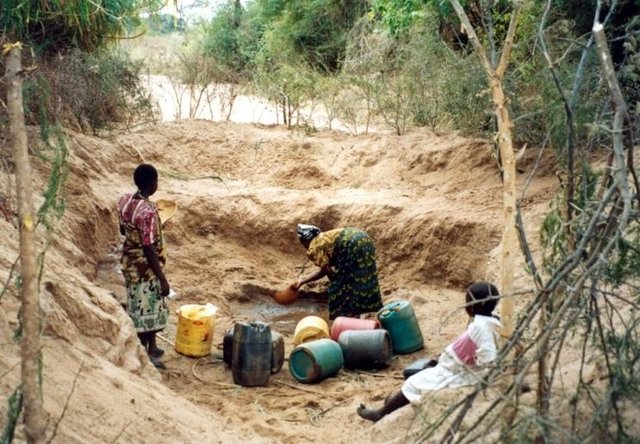
Kitui Sand dams [เคนยา]
Masonry dam in seasonal watercourse or river that stores water in the sand which accumulates above it.
- ผู้รวบรวม: Unknown User
2. คำอธิบายของแนวทาง SLM
2.1 การอธิบายแบบสั้น ๆ ของแนวทาง
Community based water resource development
2.2 การอธิบายอย่างละเอียดของแนวทาง
การอธิบายอย่างละเอียดของแนวทาง:
Aims / objectives: Purpose is to harness the available water resource for common interests. Objective is to make water more accesible especially in the dry season.
Methods: Communities are mobilised through participation process. Local artisans are trained on the job wherease the community provide local materials and free labour voluntarily. Supporting NGOs facilitate the training and provide inputs eg cement, reinforcing bars, skilled labour. Community mobilisation is basic to SASOL's programme for water resource development. SASOL take advantage of existing structures and conforms to the government policy refferred to as District focus for Rural Development. Before communities can be mobilised, people, must be trained and SASOL has found that training can best be done at the local level. The role of the community is as follows: 1. To provide secondary data/information 2. Identify problems, resources and propose possible interventions or community action plan. 3. Election of a committee to take charge - custodial of all purchased materials. 4. Collection of local materials and provide labour. 5. Carry out impact assessment periodically
2.3 รูปภาพของแนวทาง
2.5 ประเทศ ภูมิภาค หรือสถานที่ตั้งที่ได้นำแนวทางไปใช้
ประเทศ:
เคนยา
ภูมิภาค/รัฐ/จังหวัด: :
Eastern
Map
×2.6 วันที่เริ่มต้นและสิ้นสุดของแนวทาง
ระบุปีที่เริ่ม:
1995
2.7 ประเภทของแนวทาง
- ใช้โครงงานหรือแผนงานเป็นฐาน
2.8 เป้าหมายหรือวัตถุประสงค์หลักของแนวทาง
The Approach focused mainly on SLM with other activities (tree nursery establishment, health and hygiene concerns of the community. (Community Trainings))
to build sand dams in all streams in a 200km2 part of Central Division of Kitui District.
The SLM Approach addressed the following problems: Lack of water especially in dry seasonPoor water hygiene and general public health.
2.9 เงื่อนไขที่เอื้ออำนวยหรือเป็นอุปสรรคต่อการนำเทคโนโลยีภายใต้แนวทางนี้ไปปฏิบัติใช้
การมีไว้ให้หรือการเข้าถึงแหล่งการเงินและบริการ
- เป็นอุปสรรค
Lack of funds for cement
Treatment through the SLM Approach: SASOL raises the funds
การจัดตั้งระดับองค์กร
- เป็นอุปสรรค
Lack of community organization to address the prevailing problems
Treatment through the SLM Approach: participatory process to identify problems & solutions
ความรู้เกี่ยวกับ SLM การเข้าถึงการสนับสนุนด้านเทคนิค
- เป็นอุปสรรค
Lack of trained artisans
Treatment through the SLM Approach: training of artisans
อื่นๆ
- เป็นอุปสรรค
roads and access to river valleys
Treatment through the SLM Approach: improvement of roads
3. การมีส่วนร่วมและบทบาทของผู้มีส่วนได้ส่วนเสียที่เกี่ยวข้อง
3.1 ผู้มีส่วนได้ส่วนเสียที่เกี่ยวข้องในแนวทางนี้และบทบาท
- ผู้ใช้ที่ดินระดับท้องถิ่นหรือชุมชนระดับท้องถิ่น
Community village group (water users' group). Working land users were mainly women (most of the men are working outside the district.) Existing groups of land users; Working land users were mainly women (most of the men are working outside the district.)
More men working outside the district.
More women engaged in the daily activities as they are availanle. Sub-locational development committees and self help groups are mobilised for a community training that follows the approach of a PRA. The community selects from 25 to 50 trainnees, both men and women.
- รัฐบาลแห่งชาติ (ผู้วางแผน ผู้ทำการตัดสินใจ)
- องค์การระหว่างประเทศ
Kenyan political scientist in collaboration with a Netherland hydrogeologist and an environmental planner
3.2 การเกี่ยวข้องของผู้ใช้ที่ดินระดับท้องถิ่นหรือชุมชนระดับท้องถิ่นในช่วงต่างๆของแนวทาง
| ความเกี่ยวข้องของผู้ใช้ที่ดินระดับท้องถิ่นหรือชุมชนระดับท้องถิ่น | ระบุผู้ที่มีส่วนเกี่ยวข้องและอธิบายกิจกรรม | |
|---|---|---|
| การริเริ่มหรือการจูงใจ | ปฏิสัมพันธ์ | Mainly:rapid/participatory rural appraisal; partly: workshops/seminars; PRA was carried out with the assistance of world neighbours |
| การวางแผน | ปฏิสัมพันธ์ | Mainly: rapid/participatory rural appraisal; partly: public meetings; participatory planning exercise |
| การดำเนินการ | ปฏิสัมพันธ์ | responsibility for major steps; collection of local materials labour water etc |
| การติดตามตรวจสอบหรือการประเมินผล | ปฏิสัมพันธ์ | measurements/observations; community observation and comments |
| Research | ไม่มี | water hygiene analysis |
3.4 การตัดสินใจเลือกใช้เทคโนโลยี SLM
ระบุผู้ที่ทำการตัดสินใจเลือกเทคโนโลยีมากกว่าหนึ่งวิธีไปปฏิบัติใช้:
- ผู้ใช้ที่ดินเป็นผู้ตัดสินใจหลัก โดยการสนับสนุนจากผู้เชี่ยวชาญ SLM
การอธิบาย:
Consultative through participatory approaches.
Decisions on the method of implementing the SLM Technology were made by mainly by SLM specialists with consultation of land users. consultative
4. การสนับสนุนด้านเทคนิค การสร้างขีดความสามารถ และการจัดการด้านความรู้
4.1 การสร้างขีดความสามารถ / การอบรม
ได้มีการจัดอบรมให้แก่ผู้ใช้ที่ดินหรือผู้มีส่วนได้ส่วนเสียคนอื่น ๆ หรือไม่:
ใช่
ให้ระบุว่าใครเป็นผู้ได้รับการอบรม:
- ผู้ใช้ที่ดิน
- teachers, school children/students
รูปแบบการอบรม:
- กำลังดำเนินการ
- จัดการประชุมสู่สาธารณชน
- จัดคอร์ส
หัวข้อที่พูด:
through PRA and on the job
4.2 การบริการให้คำแนะนำ
ผู้ใช้ที่ดินมีการเข้าถึงการรับบริการให้คำปรึกษาหรือไม่:
ใช่
การอธิบาย/แสดงความคิดเห็น:
Name of method used for advisory service: Workshop trainning; Key elements: non residential workshops, Educational tours and visits; 1) Advisory service was carried out through: projects own extension structure and agents 2) Advisory service was carried out through: projects own extension structure and agents; Extension staff: specifically hired project employees 3) Target groups for extension: land users; Activities: SWC, Tree planting, water management
Advisory service is quite adequate to ensure the continuation of land conservation activities; community resource persons trained to make it sustainable.
4.3 การเสริมความแข็งแกร่งให้กับสถาบัน (การพัฒนาองค์กร)
สถาบันได้รับการจัดตั้งขึ้นมาหรือเสริมความแข็งแกร่งโดยแนวทางนี้หรือไม่:
- ใช่ ปานกลาง
ระบุระดับของสถาบันที่ได้รับการเสริมความแข็งแกร่งหรือจัดตั้งขึ้นมา:
- ท้องถิ่น
- cooperative activity to solve water problem
4.4 การติดตามตรวจสอบและประเมินผล
การติดตามตรวจสอบและประเมินผลเป็นส่วนหนึ่งของแนวทางหรือไม่:
ใช่
ความคิดเห็น:
bio-physical aspects were ad hoc monitored
technical aspects were regular monitored
economic / production aspects were ad hoc monitored by 0 through observations; indicators: None
no. of land users involved aspects were regular monitored by 0 through measurements; indicators: None
management of Approach aspects were ad hoc monitored by 0 through observations; indicators: None
There were few changes in the Approach as a result of monitoring and evaluation: construction of dam in one single phase as opposed to several phase due to difficulties In comminity mobilisation for subsequent phases. Commencement of construction from wing walls instead of the main structure. This is psycologically attractive to land users as they remain motivated to realise completion of the dam across the river/stream bed.
5. การสนับสนุนด้านการเงินและวัสดุอุปกรณ์
5.1 ระบุงบประมาณประจำปีสำหรับแนวทาง SLM นี้
ถ้าหากว่างบประมาณประจำปีไม่เป็นที่ทราบแน่นอน ให้ระบุช่วงลงไป:
- 10,000-100,000
แสดงความคิดเห็น (แหล่งของการระดมทุน ผู้บริจาคคนสำคัญ):
Approach costs were met by the following donors: international (-): 50.0%; international non-government (-): 10.0%; local community / land user(s) (-): 40.0%
5.2 การสนับสนุนด้านการเงิน / วัสดุอุปกรณ์ให้แก่ผู้ใช้ที่ดิน
ผู้ใช้ที่ดินได้รับการสนับสนุนด้านการเงิน / วัสดุอุปกรณ์ไปปฏิบัติใช้เทคโนโลยีหรือไม่:
ใช่
ถ้าใช่ ให้ระบุประเภทของการสนับสนุน เงื่อนไขและผู้จัดหามาให้:
Provision of purchased inputs like cement.
5.3 เงินสนับสนุนสำหรับปัจจัยนำเข้า (รวมถึงแรงงาน)
- อุปกรณ์
| ระบุปัจจัยนำเข้าที่ได้รับการสนับสนุน | เห็นด้วยระดับไหน | ระบุเงินสนับสนุน |
|---|---|---|
| เครื่องมือ | ได้รับการช่วยเหลือทางการเงินแบบเต็ม | |
- วัสดุสำหรับการก่อสร้าง
| ระบุปัจจัยนำเข้าที่ได้รับการสนับสนุน | เห็นด้วยระดับไหน | ระบุเงินสนับสนุน |
|---|---|---|
| Cement and reinforced bars | ได้รับการช่วยเหลือทางการเงินแบบเต็ม | |
ถ้าแรงงานโดยผู้ใช้ที่ดินเป็นปัจจัยนำเข้าที่มีอยู่มากมาย ระบุด้วยว่าเนื่องจาก:
- สมัครใจ
ความคิดเห็น:
Provision of purchased inputs like cement.
5.4 เครดิต
มีการจัดหาเครดิตมาให้ภายใต้แนวทาง SLM หรือไม่:
ไม่ใช่
6. การวิเคราะห์ผลกระทบและการสรุป
6.1 ผลกระทบของแนวทาง
ช่วยให้ผู้ใช้ที่ดินนำเอาเทคโนโลยี SLMไปใช้และบำรุงรักษาสภาพไว้ได้หรือไม่:
- ไม่ใช่
- ใช่ เล็กน้อย
- ใช่ ปานกลาง
- ใช่ อย่างมาก
more tree nurseries, more vegetable growing, more time for terracing etc instead of treking for water
N/A
Did other land users / projects adopt the Approach?
- ไม่ใช่
- ใช่ เล็กน้อย
- ใช่ ปานกลาง
- ใช่ อย่างมาก
other groups using water as an entry point for development e.g. catholic diocese
6.3 ความยั่งยืนของกิจกรรมของแนวทาง
ผู้ใช้ที่ดินสามารถทำให้สิ่งต่างๆ ที่ได้ปฏิบัติใช้โดยแนวทางนี้ยั่งยืนได้หรือไม่ (โดยไม่มีการสนับสนุนจากภายนอก):
- ไม่แน่ใจ
ถ้าตอบว่าไม่หรือไม่แน่ใจ ให้ระบุและแสดงความคิดเห็น :
Still need help for purchase of inputs especially cement and reinforced bars
6.4 จุดแข็งและข้อได้เปรียบของแนวทาง
| จุดแข็ง / ข้อได้เปรียบของแนวทางในทัศนคติของผู้ใช้ที่ดิน |
|---|
| avail labour readily for demanding activities (How to sustain/ enhance this strength: engage groups in self help farm activities) |
| laggards are pulled along by innovators |
| communal identification of available resources and strngths |
| จุดแข็ง / ข้อได้เปรียบของแนวทางในทัศนคติของผู้รวบรวมหรือวิทยากรหลัก |
|---|
| Participatory PRA creates awareness (How to sustain/ enhance this strength: through trainings) |
| empowers community (How to sustain/ enhance this strength: start income generating activities) |
| costs minimized through voluntary labour |
| self reliance strengthened |
| community empowered |
6.5 จุดอ่อน / ข้อเสียเปรียบของแนวทางและวิธีในการแก้ไข
| จุดอ่อน / ข้อเสียเปรียบในทัศนคติของผู้ใช้ที่ดิน | สามารถแก้ไขปัญหาได้อย่างไร |
|---|---|
| materials are too expensive for them to afford | local fund raising initiatives |
| จุดอ่อน / ข้อเสียเปรียบในทัศนคติของผู้รวบรวมหรือวิทยากรหลัก | สามารถแก้ไขปัญหาได้อย่างไร |
|---|---|
| impact on river flow needs to be studied |
7. การอ้างอิงและการเชื่อมต่อ
7.1 วิธีการหรือแหล่งข้อมูล
- ไปเยี่ยมชมภาคสนาม การสำรวจพื้นที่ภาคสนาม
- การสัมภาษณ์กับผู้ใช้ที่ดิน
7.2 การอ้างอิงถึงสิ่งตีพิมพ์
ชื่อเรื่อง ผู้เขียน ปี ISBN:
Thomas, D.B. 1999'where there is no water.' A story of community water development & dand dams in Kitui District, Kenya
ลิงก์และโมดูล
ขยายทั้งหมด ย่อทั้งหมดลิงก์

Kitui Sand dams [เคนยา]
Masonry dam in seasonal watercourse or river that stores water in the sand which accumulates above it.
- ผู้รวบรวม: Unknown User
โมดูล
ไม่มีโมดูล


